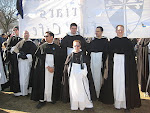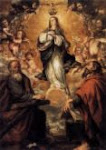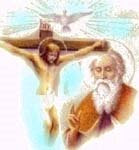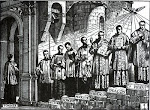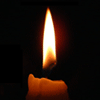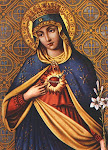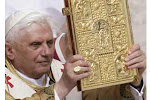I am sorry I can post no more photos on the blog as we are now being charged for uploading photos, but I am making enquiries.
http://maryinmonmouth.blogspot.com/2009/06/malpas-priory-newport-dedicated-to.html
In 2009, I wrote a post in the series of Benedictine Priories in Gwent and wrote about the later history of St Triac (Brioc's) Clunaic (Strict Benedictine) Priories. More interesting still is the fact that it was a house of the Abbey of Monte Acuta (now 'Montacute House') and appeared in various records.
In 1132 Charter of Robert, earl of Gloucester, confirming the gift of Malpas Village etc to Montacute Priory. It also refers to Novo Burgo (Newport) (-one of the earliest references to the existence of the town as a "New Borough") See: Robert B. Patterson 'Earldom of Gloucester Charters' 1973. No.156 page 146.
1239 MALPAS there was an agreement between the abbot and convent of Gloucester and the Prior and convent of Montacute and the Prior of Malpas....the abbbot and convent of St Peter's Gloucester or their assigns, should receive, peacably and fully, all the tithes of Mendelgif and of all things of old belonging to the church of Newport, without hindrance or annoyance
Translated by James Conway Davies Episcopal Acts Relating to Welsh Dioceses 1066-1272 1948. Vol.II page 715.
Published in Latin by W.H. Hart Historia et Cartilarium Monasterii S. Petri Gloucestriæ 1863. Vol. II. No. DXXVII, pages 62-63.
So it seems from this time, that St Peter's Abbey Gloucester was entitled to oversight of all the tithes belonging to St Triac's Priory.I am grateful to Bob Trett who has researched this information, as it enhances the former post, although it seems by the time the Priory was seized, it was at least still collecting the tithes of Mendelgieff, and the cattle.as it is mentioned in the accounts,
Saint Triac
St Triac was originally St Brioc or St Briavel or St Brieux in Brittany. Triac was born in Ceredigion around 440AD
St Germain of Auxerre leaves Ireland ti establish schools for the irish missions and is given Triac to train.450AD, so only ten years old.
454AD St German re-founds Caer-wogorn and then departs with his pupils to Paris.
465 AD Returns to Ireland Brioc receives priests apostolic ordination and returns to Wales.
470AD Triac (aka Brioc) returns to Ceredigion, founds churches and assists St Germain, wherever he is, including the Western Isles.
475AD St Germain dies.
480AD troubles in Ceredigion because the sons of Cunedda invade and the Irish are expelled.
520AD Triac was compelled to leave -goes to Cornwall and then to Brittany.
526AD Returns to Wales. The fact he is mentioned at St Briavels (Briomagl) shows he had been there and also that he had founded the llan at Malpas. (Llanfriog) which can be observed from the large circular 'llan' outline of the churchyard wall.
On returning to his monastery at Saint Brieux he finds his nephew Tudwal in possession and unwilling to receive him (ingratitude!) He goes on to the land of Rouvre.
530AD He is recorded to have visited the court of King Childebert and has the grants made by Rhigual confirmed. He returned to Britanny and then died. The Body of St Triac was translated on July 23 1166 in the presence of Henry II of England and William, Bishop of Angers, where it had been taken in the tenth century, on account of the attacks of Vikings in the North of Brittany.
The only other surviving monasteries of St Triac (aka Brioc) are at Llandyfriog in Ceredigion (Rees gives Tyfriog (House of Brioc/Triac) ap Dingad-indicating that St Dingat was the father of Triacus (the Latin form of Brioc)Approximate date of the death of St Illtyd was 537AD.
There is also a Church dedicated to him in Cornwall-St Brioc near Wadebridge (I have posted on this church also)
In iconography, he is seen an an abbbot's robes, sometimes with a wolf at his feet.
Monday, February 14, 2011
Thursday, February 10, 2011
SUNRISE CANDLEMAS IN GWENT and ERGYNG February 2nd 2011 8pm
I left home at 6pm in complete darkness to attend this wonderful ceremony at Belmont Abbey.........
One of the most beautiful of the Christian Masses celebrating the Presentation of the Lord, a Light to Lighten the Gentiles. There is an ommission in the 'Nunc Dimittis at the end,of the word 'Salvation'-a rather important word, but it takes a long time to upload a video so my apologies.
This is a ceremony from a wonderful
and reverent Benedictine House, which does so much to support the Faithful in Monmouthshire.In spite of the 8am start, I was privileged to be present.
Thursday, February 3, 2011
GARWAY PICTURES AND TEMPLAR CARVINGS
Templar Church of St Michael, Garway. Travel Directions are given in the last post.
Holy well, before restoration
Altar incisions from the date of the earliest stone church (Saxon or earlier)
Stoup, where the Templars and others rememmbered their baptism and ritually invoked the Father Son and Holy Spirit when entering and leaving church, exactly as today.
Altar Incision, from consecration of altar in Catholic times.
A 'Green Man' Carving, for Christians denoting new life in Christ.
Cross inside the Garway Church
Norman arch in Garway Church
Carving outside the walls
Templar Carving outside the church on the Walls
Another Carving Knights Templar
Fish -one of the earliest Christian signs, which Evelyn Lord, an acknowledged expert on the Templars, believes to have belonged to an earlier Church, the successor to St Dyfrig's (Dubricius) church which was laid waste by Vikings.
Blessed Sacrament above the piscina
A little unclear, but you can see the door into a previous ROUND nave, which can be traced outside into an ambulatory which seems to have gone around the outside-although I think I can see a much smaller, earlier Saxon church traced in the wall.
Outside the Nave
Beautiful Carving showing a Knight spurred on by angels.
This looks like a niche for a statue-possibly of the 'Blessed' Mother. (words of Angel Gabriel)
Earlier carving in the church, but I am not sure, what it is!
Holy well, before restoration
Altar incisions from the date of the earliest stone church (Saxon or earlier)
Stoup, where the Templars and others rememmbered their baptism and ritually invoked the Father Son and Holy Spirit when entering and leaving church, exactly as today.
Altar Incision, from consecration of altar in Catholic times.
A 'Green Man' Carving, for Christians denoting new life in Christ.
Cross inside the Garway Church
Norman arch in Garway Church
Carving outside the walls
Templar Carving outside the church on the Walls
Another Carving Knights Templar
Fish -one of the earliest Christian signs, which Evelyn Lord, an acknowledged expert on the Templars, believes to have belonged to an earlier Church, the successor to St Dyfrig's (Dubricius) church which was laid waste by Vikings.
Blessed Sacrament above the piscina
A little unclear, but you can see the door into a previous ROUND nave, which can be traced outside into an ambulatory which seems to have gone around the outside-although I think I can see a much smaller, earlier Saxon church traced in the wall.
Outside the Nave
Beautiful Carving showing a Knight spurred on by angels.
This looks like a niche for a statue-possibly of the 'Blessed' Mother. (words of Angel Gabriel)
Earlier carving in the church, but I am not sure, what it is!
Labels:
Garway,
Green Man,
Holy Well of Patrishow.
Subscribe to:
Posts (Atom)




